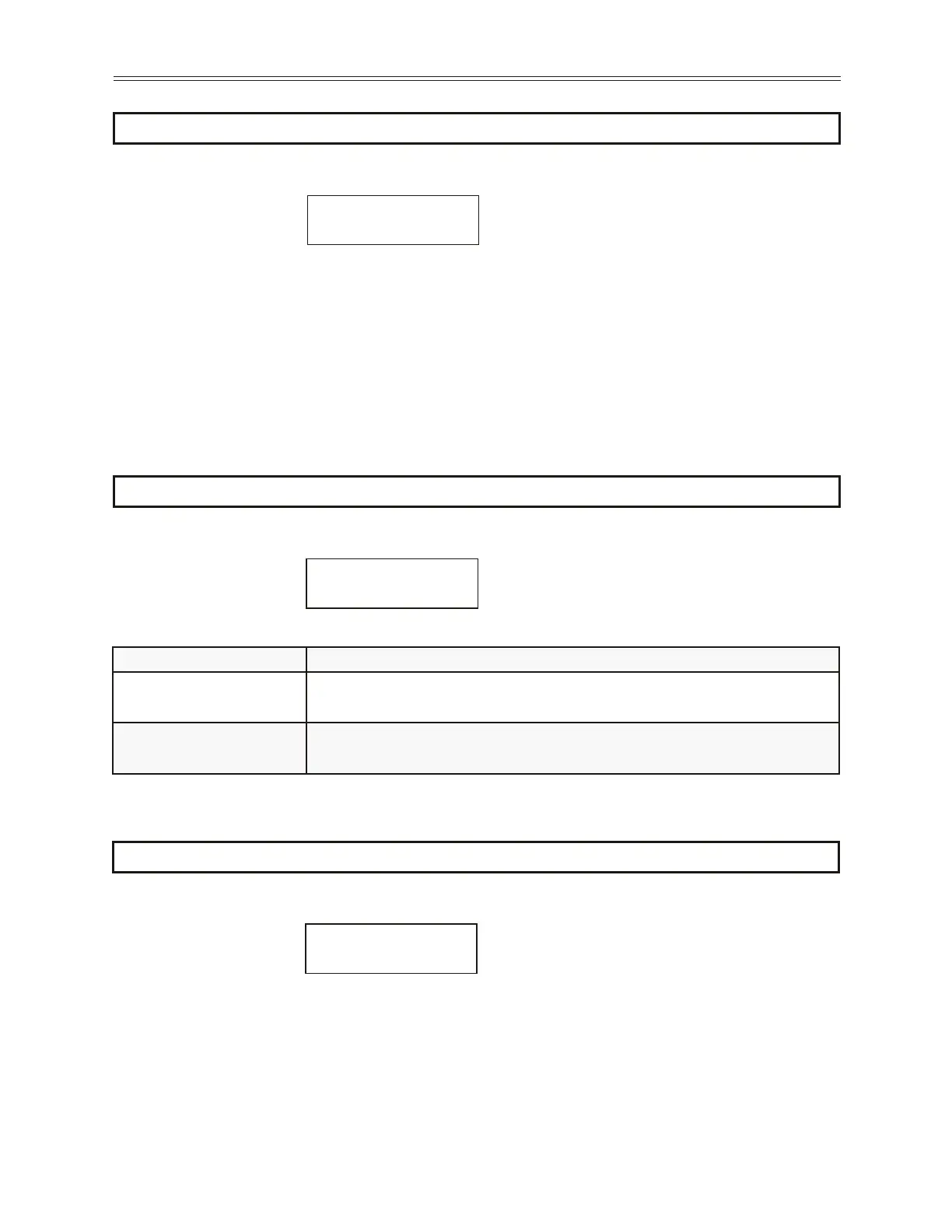116
FstatorFilt AFN13
Start Field AFN 14
AFN: Fstator Filt
13 8ms
AFN: Start Field
14 No
7 - PARAMETER DESCRIPTION
LCD Display
Range 1 to 100 ms (Default 8ms)
Description Stator Frequency Filter. This parameter lters the stator frequency applied to the motor, which can help
tune the acceleration behavior of the motor. This is particularly helpful when using short ramps and
operating the motor at a frequency above the Boost Taper Freq (AFN 08) value (eld weakening area).
Lower values allow dynamic currents to be produced, but with greater peaks. This could produce
unstable states in the eld weakening area. Low values for this parameter can cause overcurrent faults
while accelerating to frequencies over the Knee Frequency. Higher values allow the drive to run more
smoothly at frequencies over the Knee Frequency and protect the drive against overcurrent—often the case
when using special motors or spindle drives.
See also FUN02 on page 83.
LCD Display
Range
See also FUN02 on page 83.
Parameter Value Description
No (Default)
The shaft will begin rotating after receiving a Start command, without delay. If the application has heavy
load conditions or short ramp times, this setting can produce very large starting currents, to overcome the
inertia of the system. This may produce nuisance trips when starting.
Yes
The shaft will begin rotating after receiving a Start command, with delay, the drive is building up the
magnetic eld in the motor. This allows the drive to start in vector mode with less starting current.
z NOTE: Automatically set to “yes” when FUN 02 is set to “Vector”
Filter Slip AFN 15
AFN: Filter Slip
15 100ms
LCD Display
Range 10 to 1000 ms (Default 100ms)
Description This parameter lters the slip frequency applied to the motor, which can help improve the dynamic
response of the drive. This parameter produces the following results based on the parameter value:
If the parameter is congured to 100 ms, the drive will produce stable conditions to a change in load, in
most cases.
If the parameter is congured to less than 100 ms, the drive will be able to react quickly to a change in
load, but may over-compensate its reaction to the load.
If the parameter is congured to greater than 100 ms, the drive will react very slowly to a change in load
and will need a longer time to compensate for the difference between the setpoint and the actual frequency.
